RARE! WWI 1918 Meuse–Argonne Offensive AEF First Army 90th Division Frontline Combat Artillery Trench Map (Double-Sided)

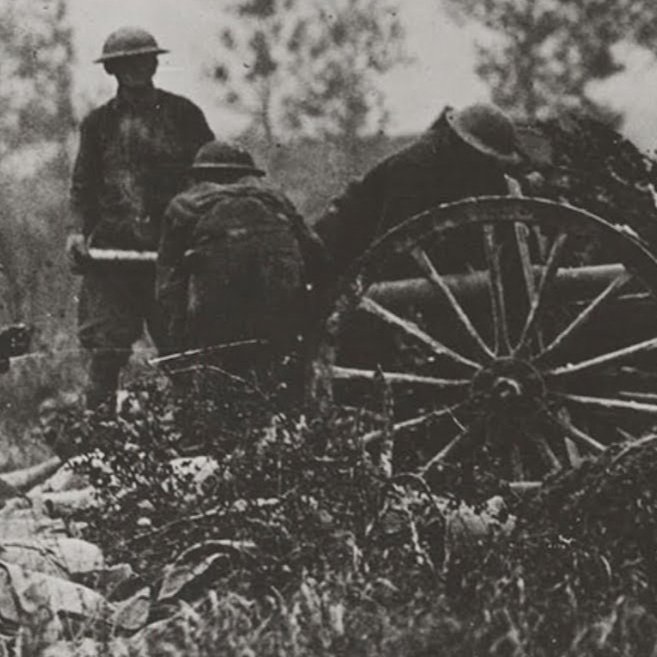
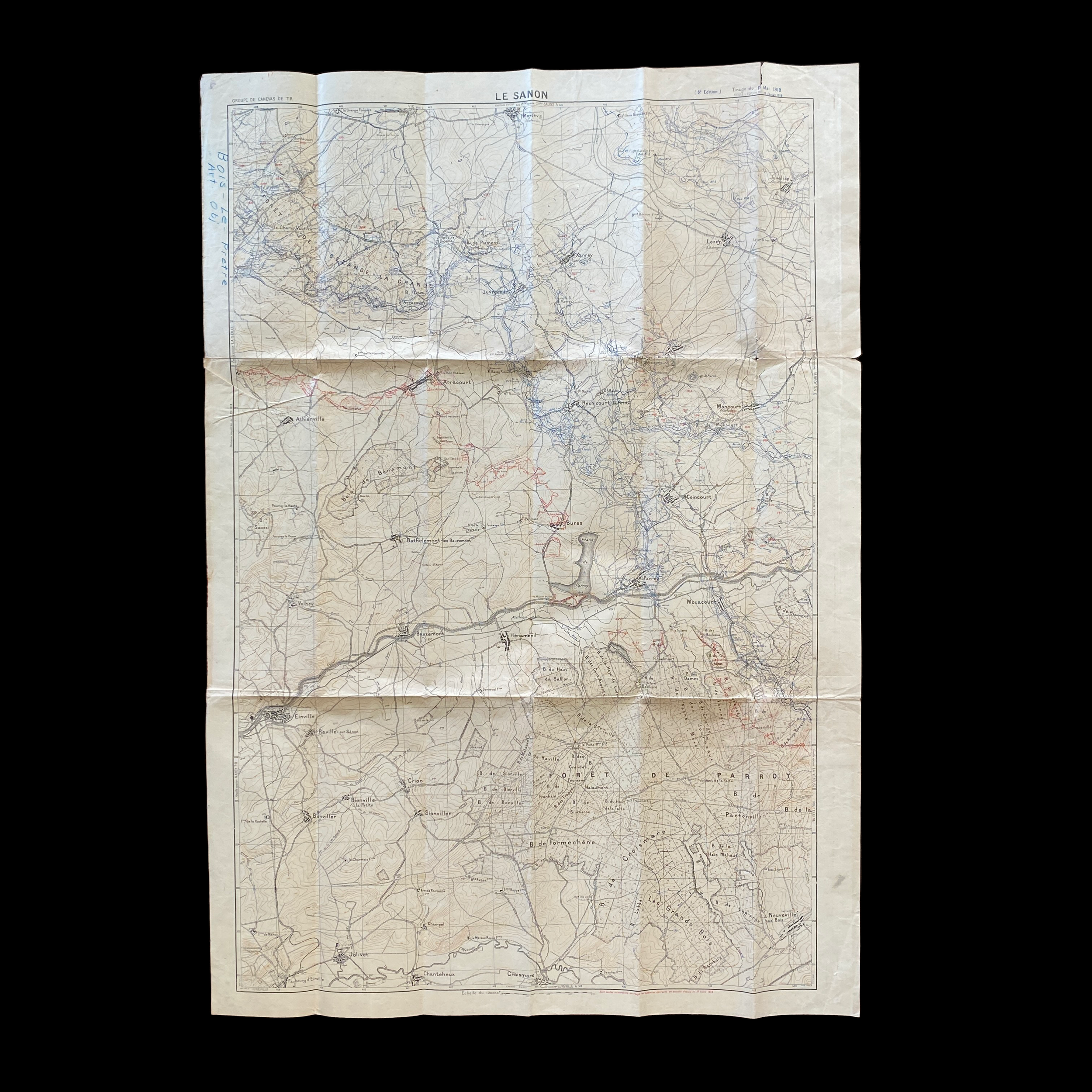
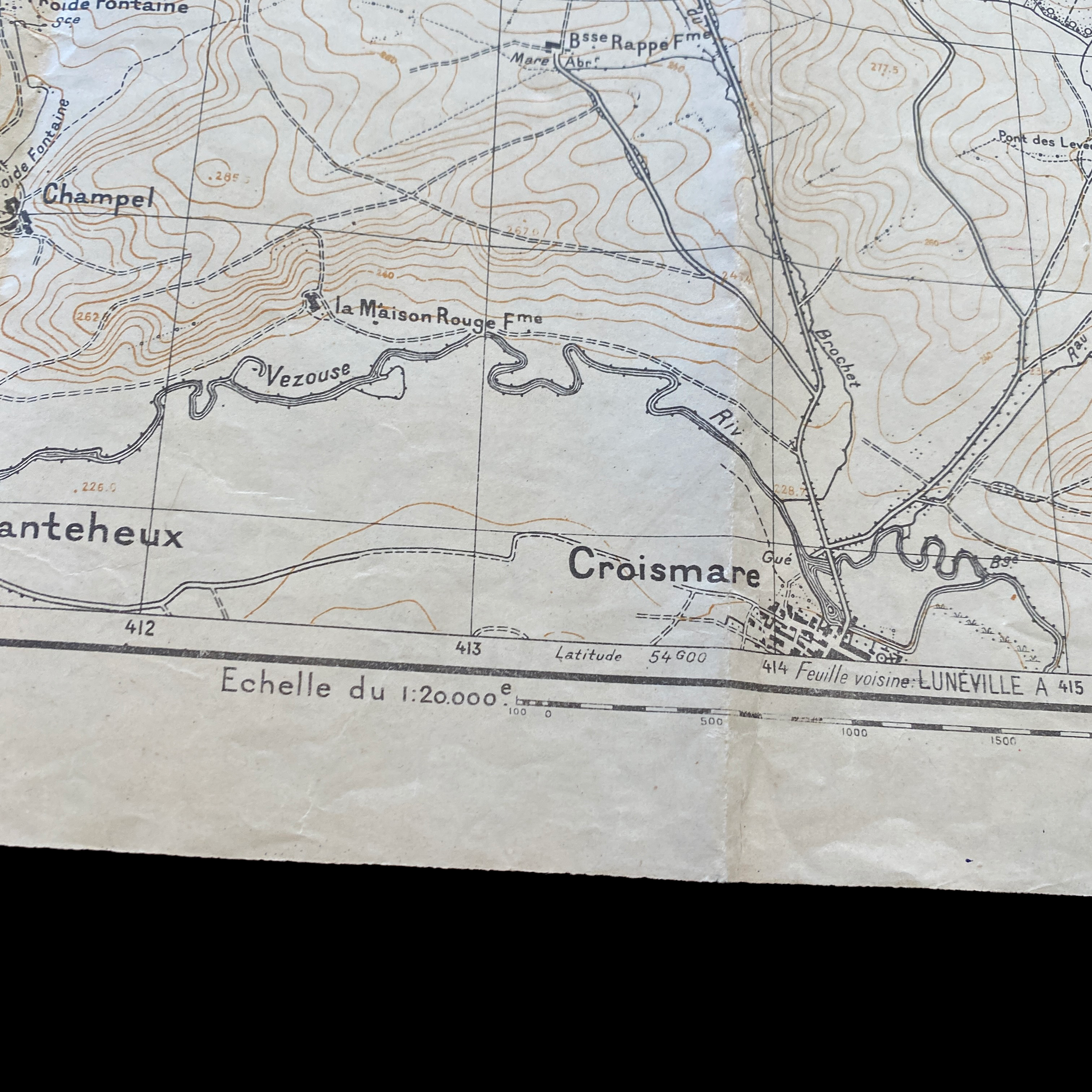

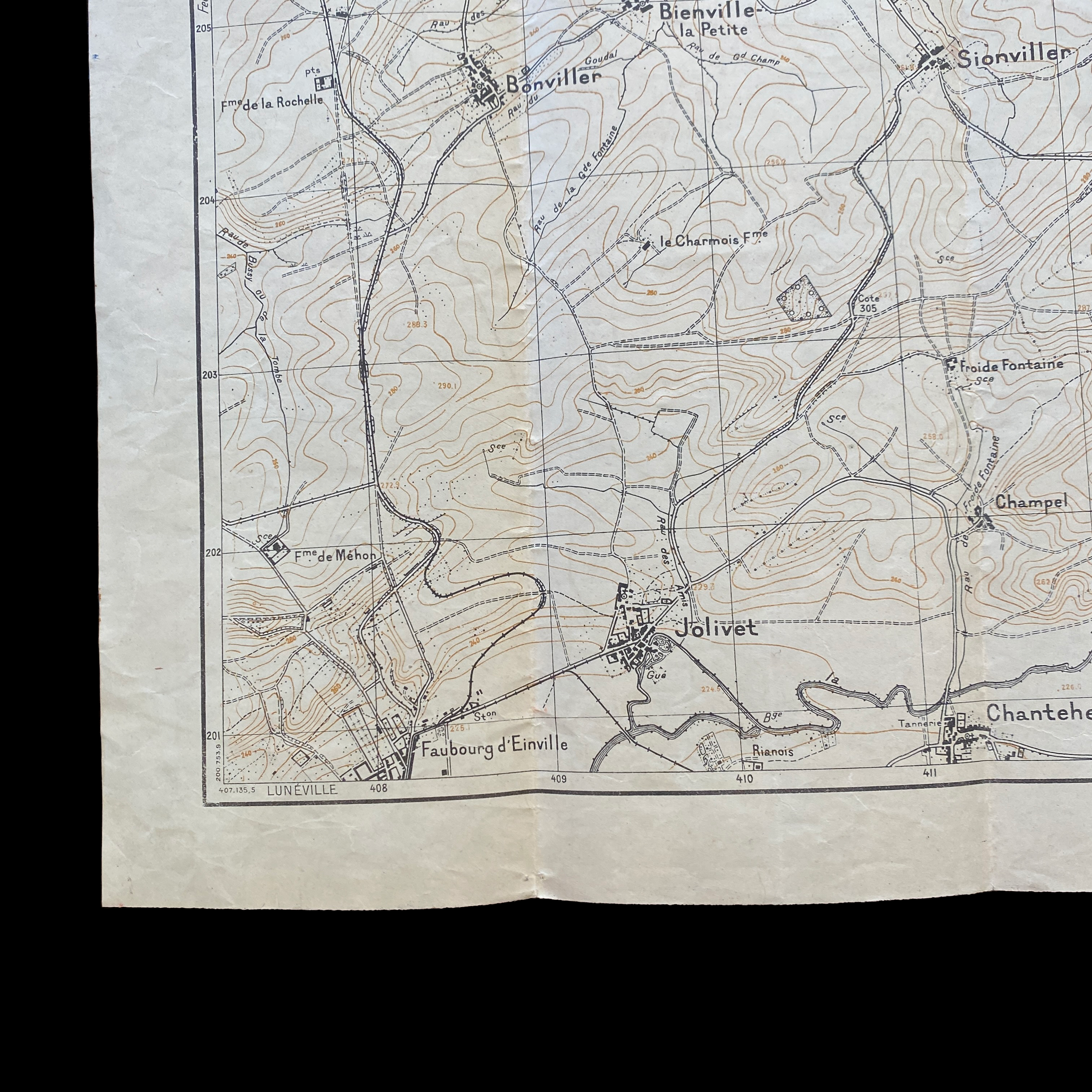
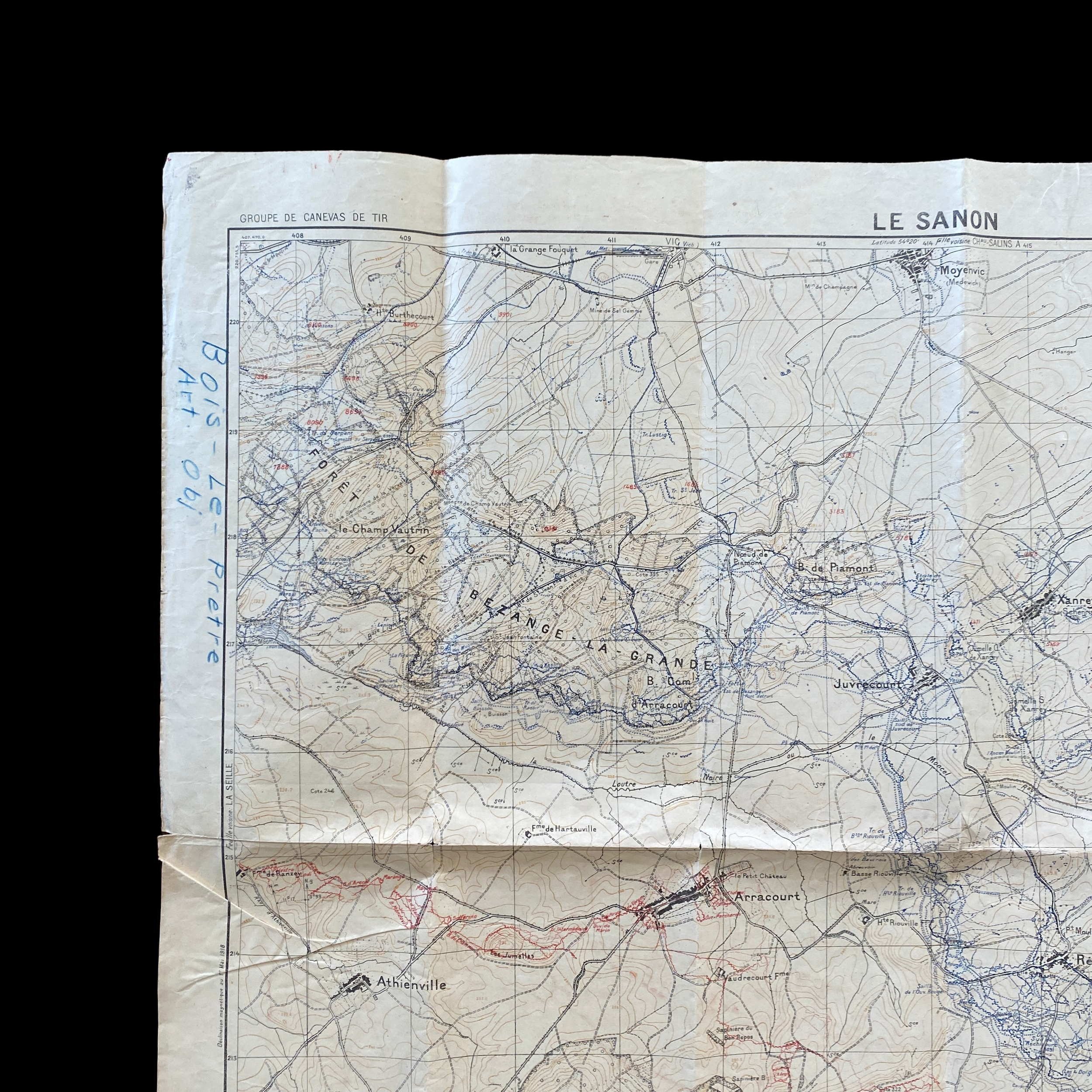
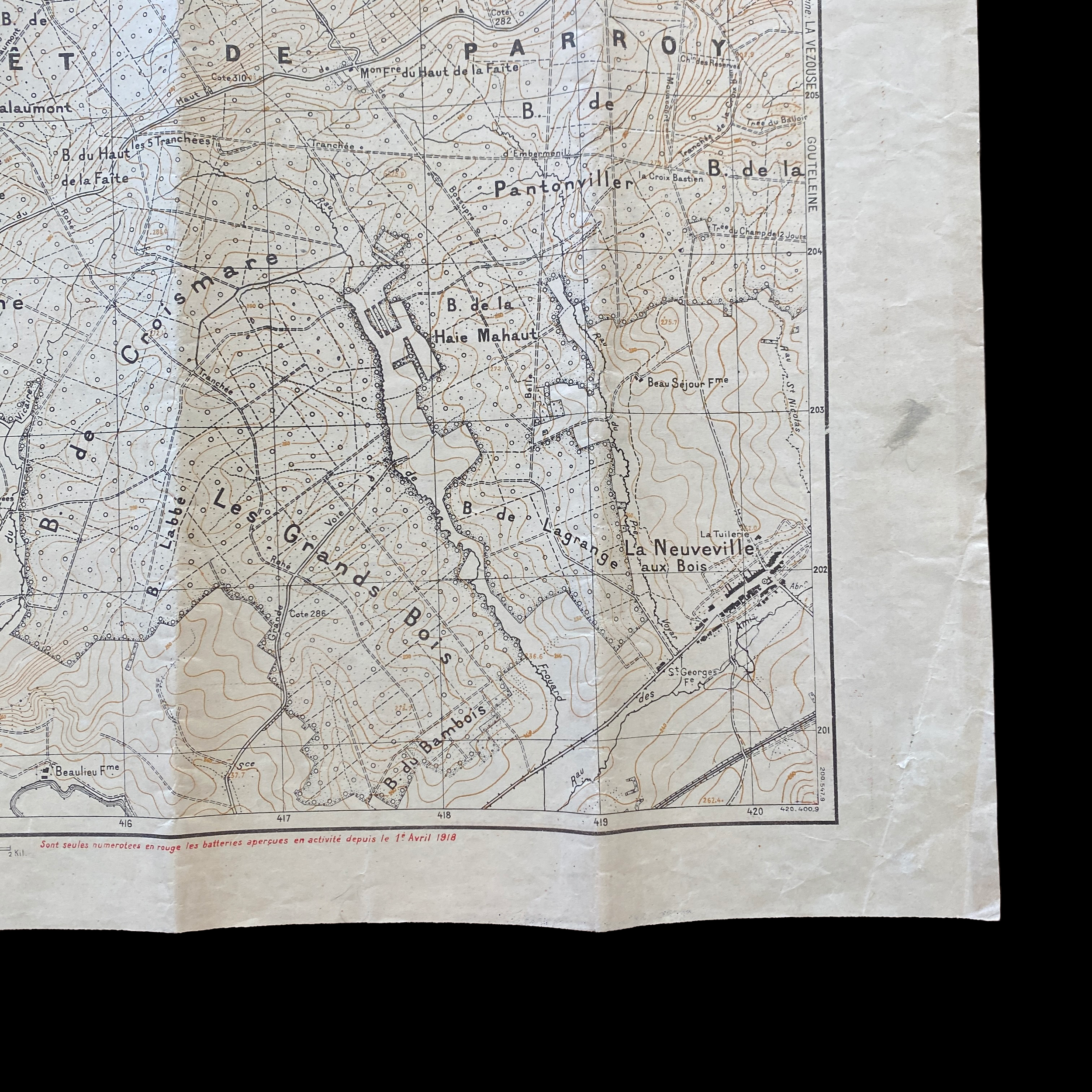
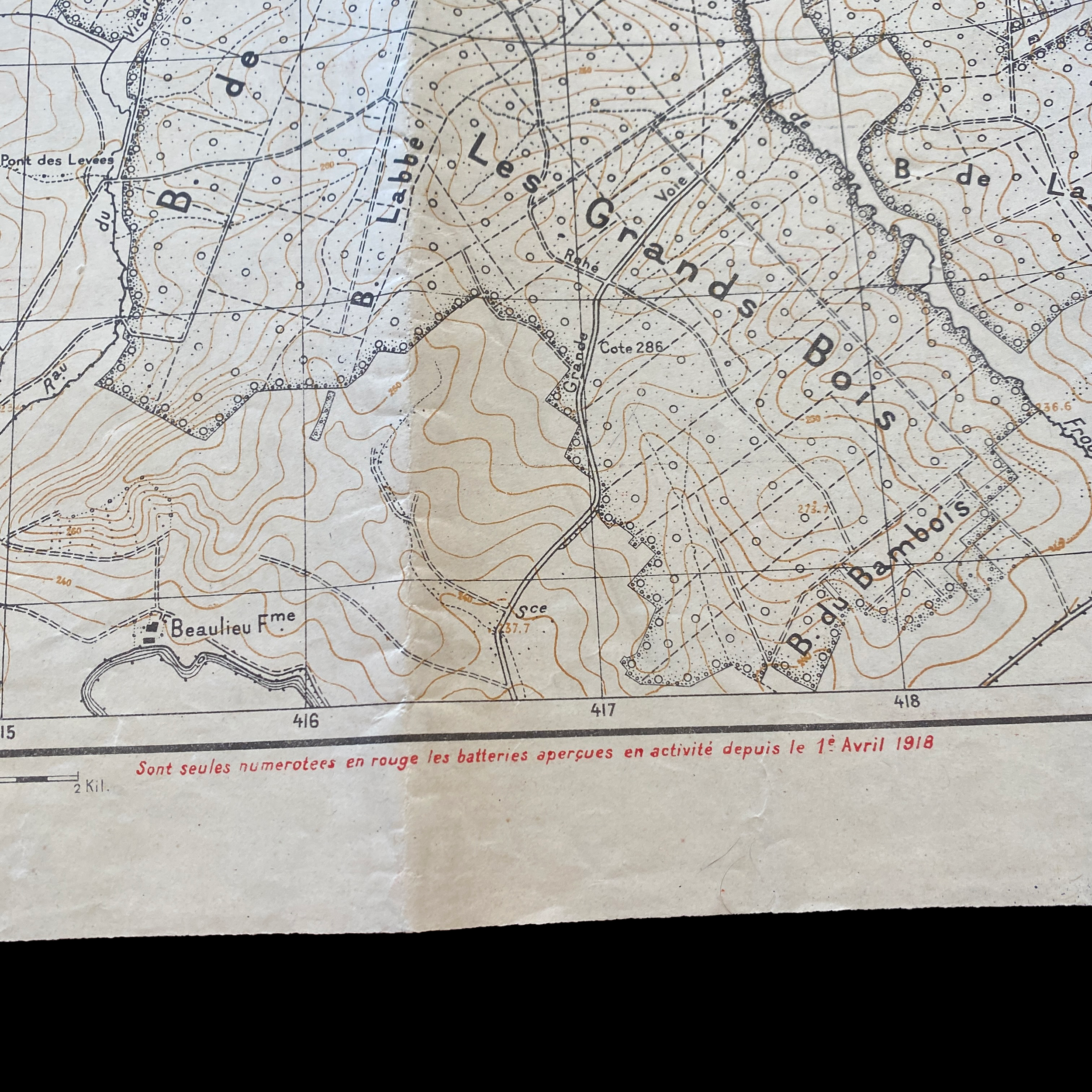
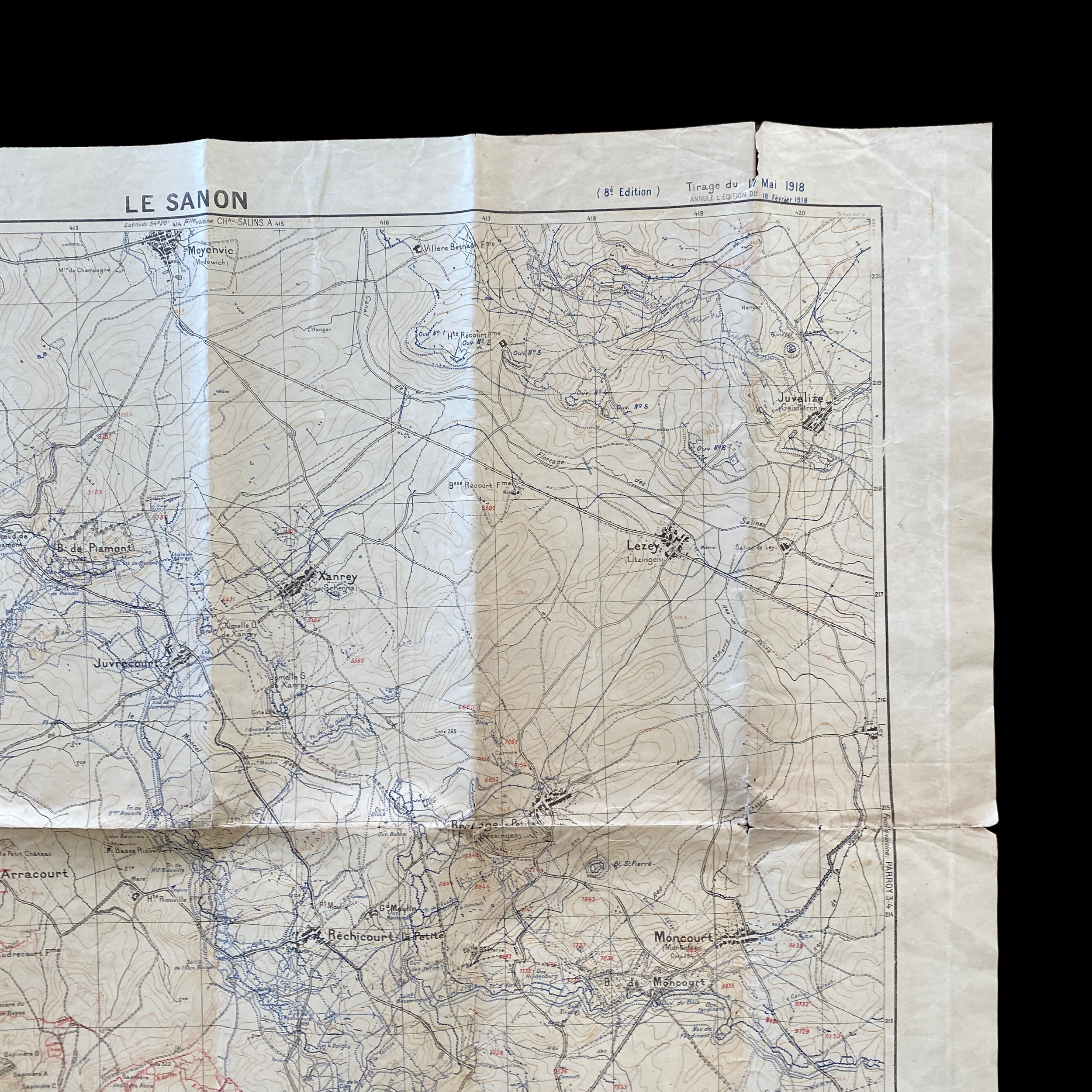
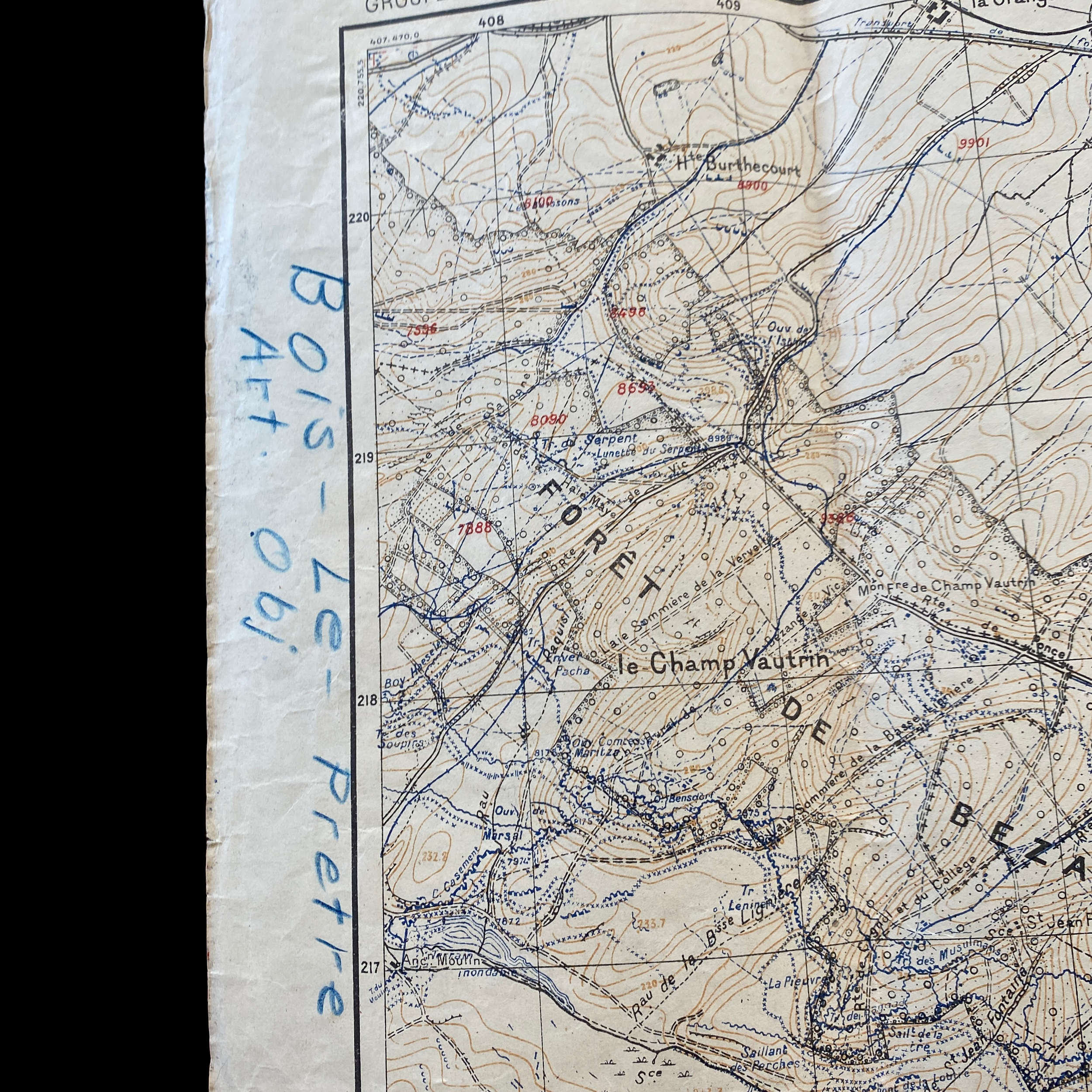
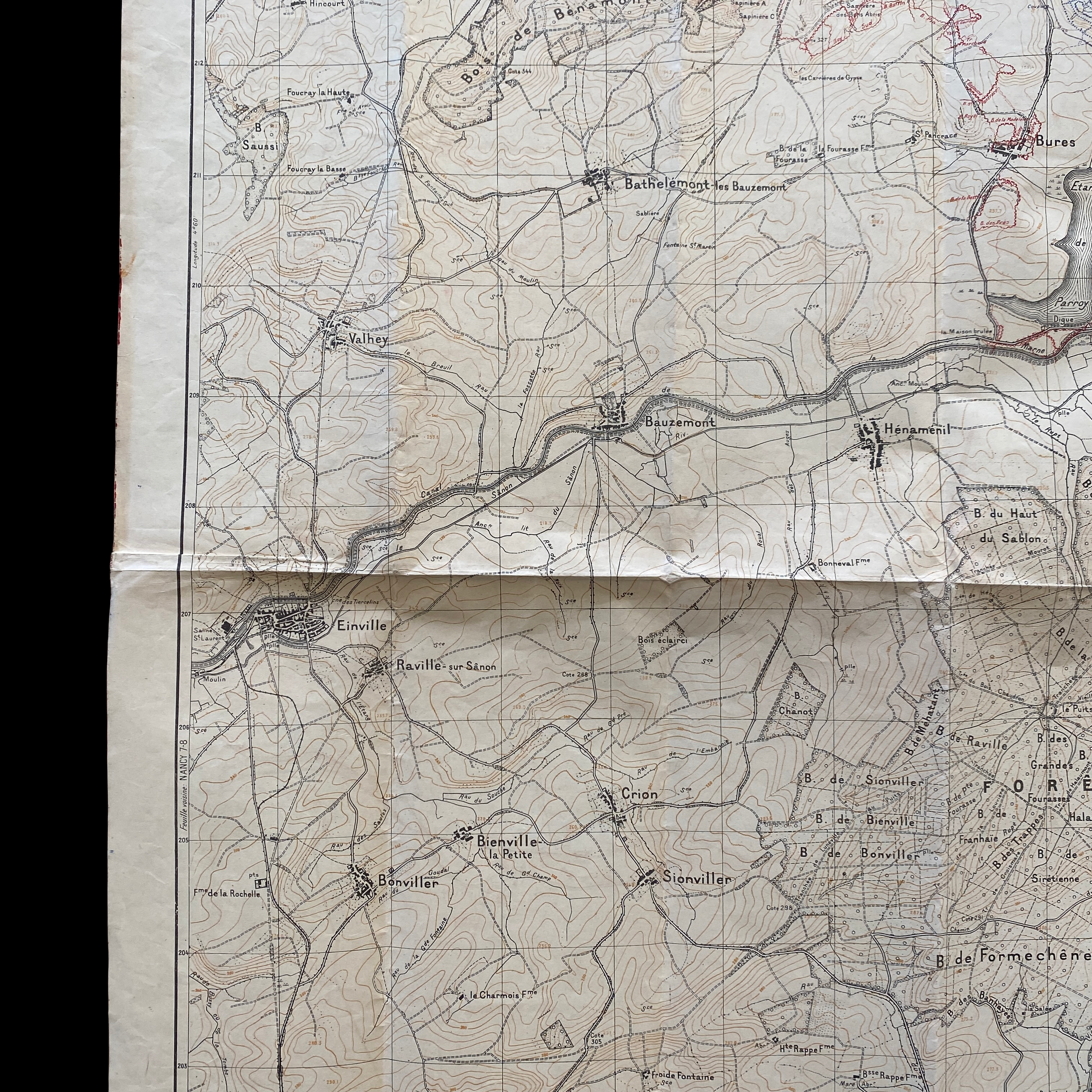

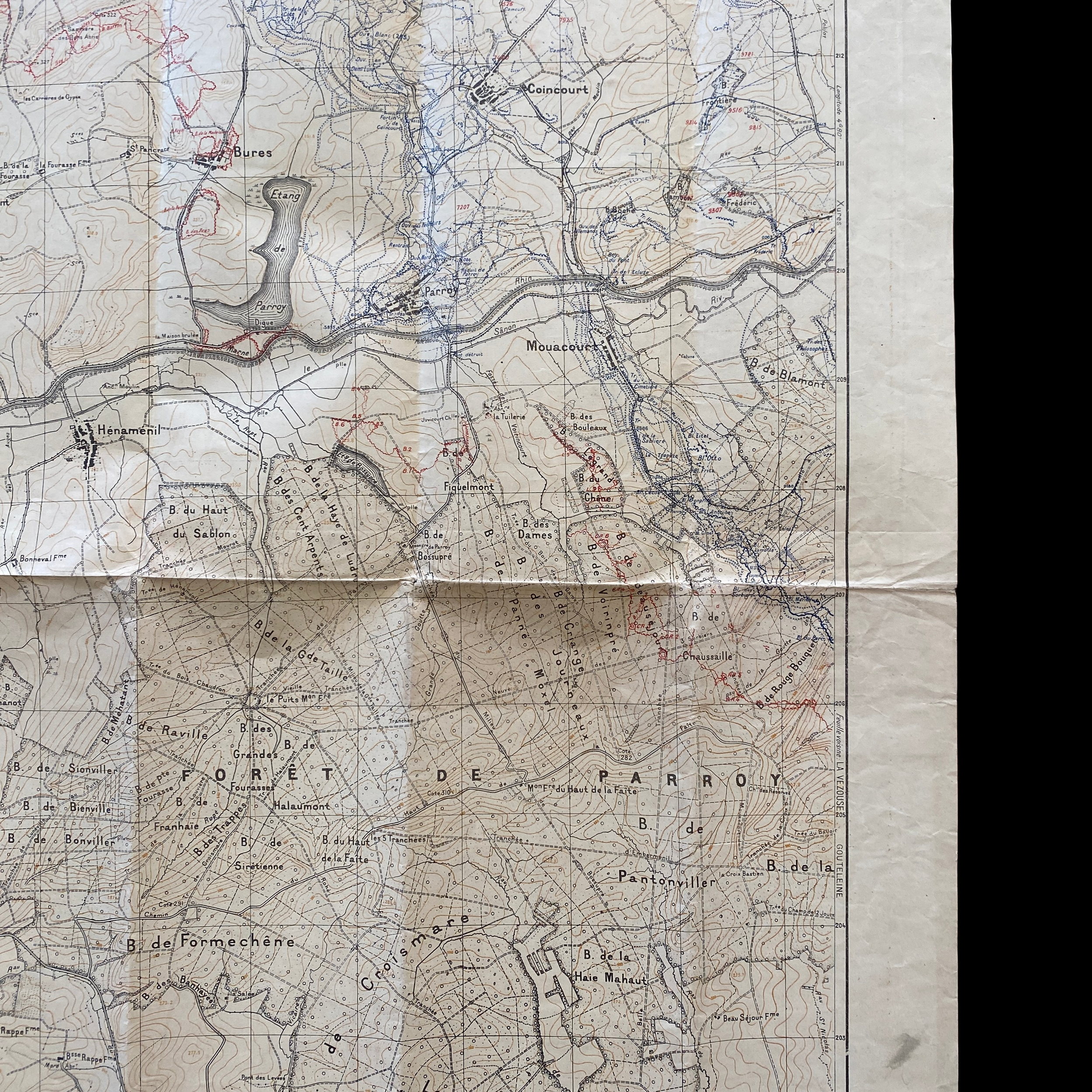
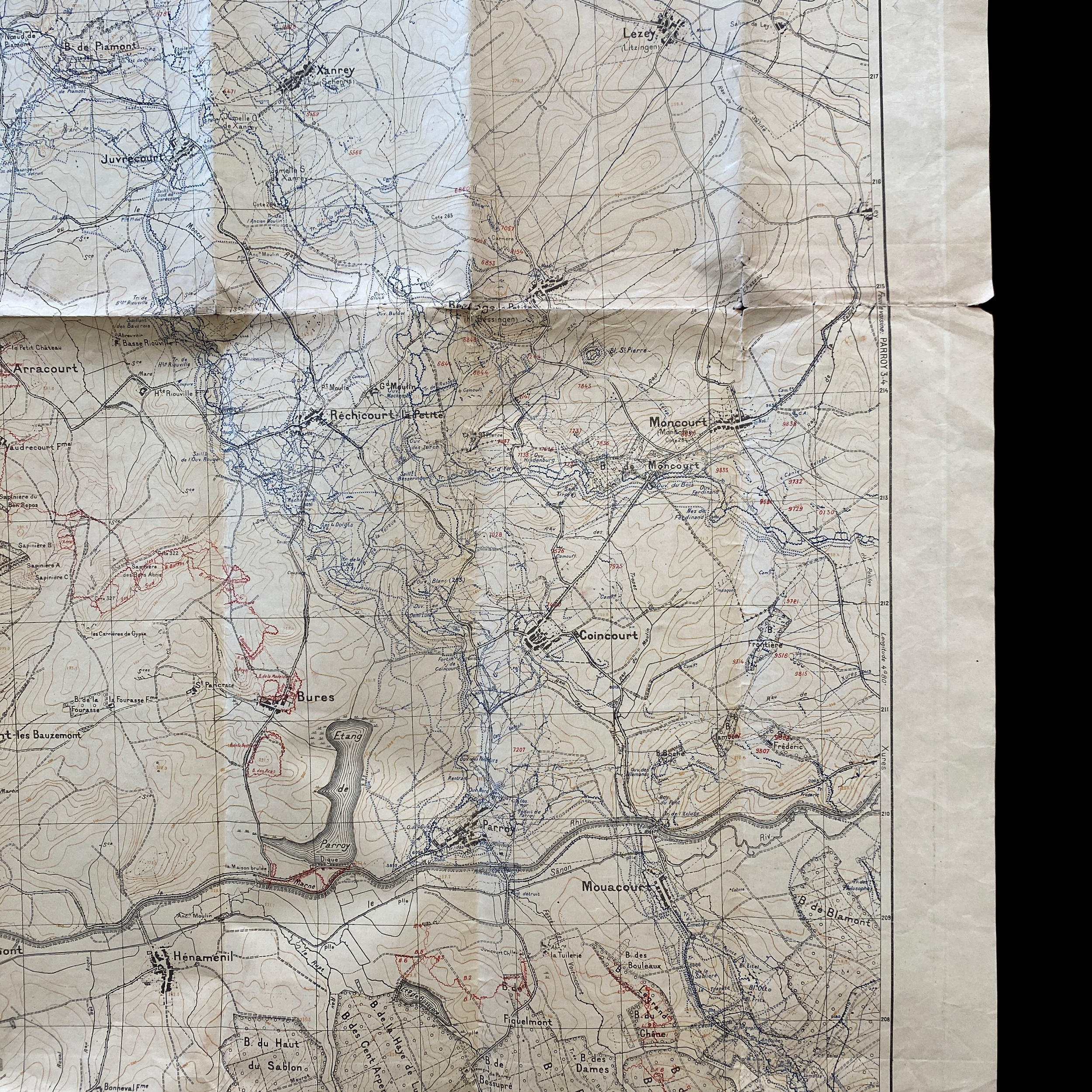

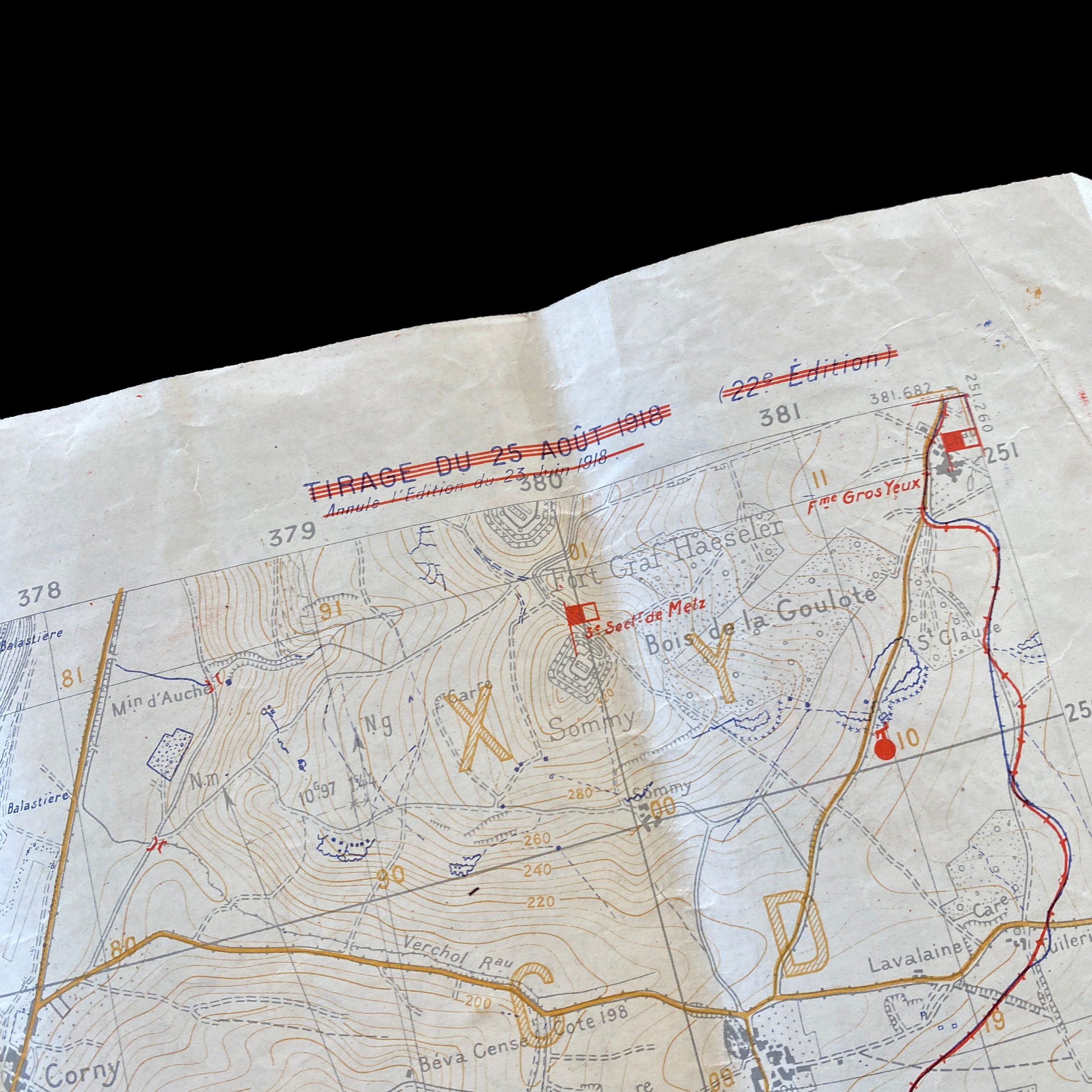
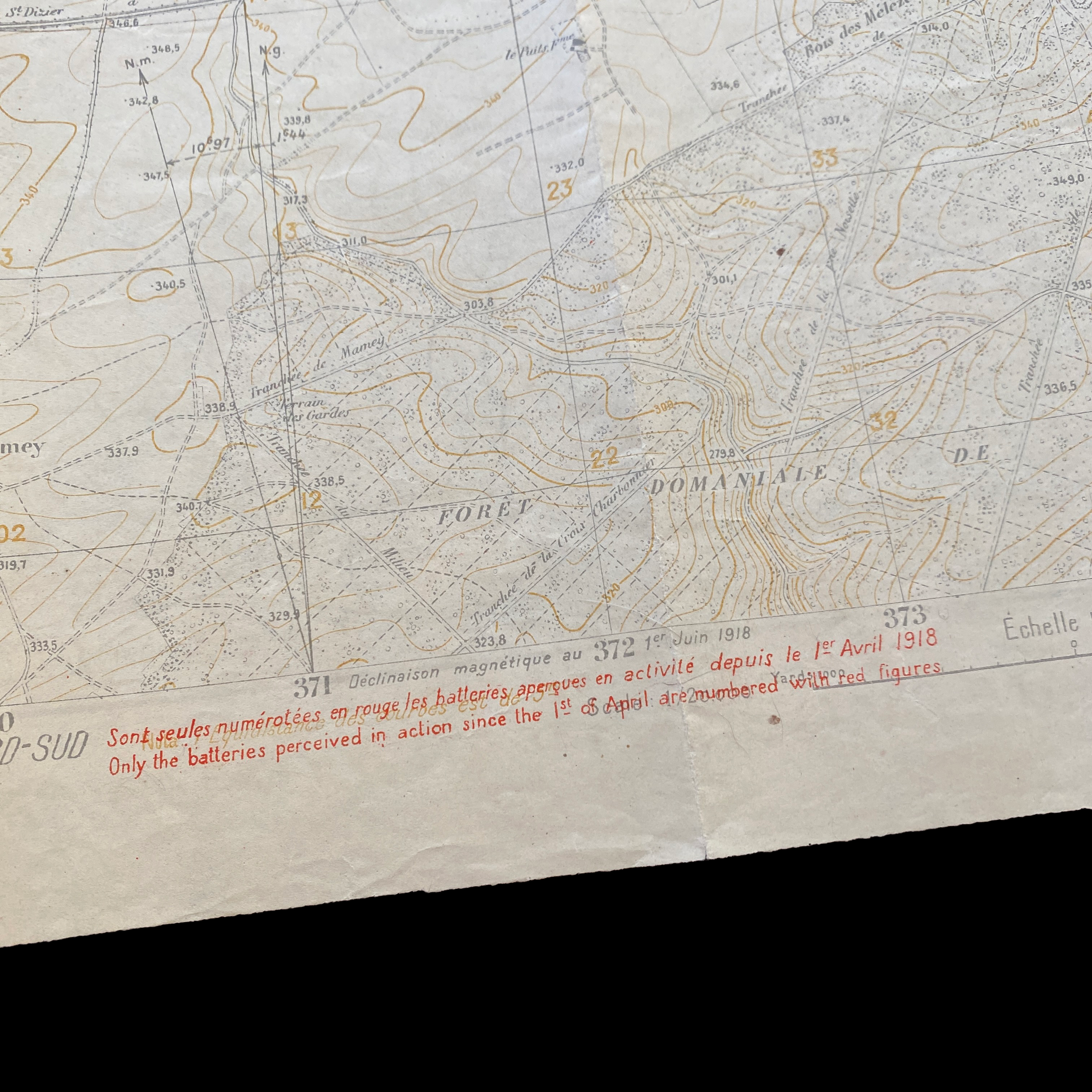
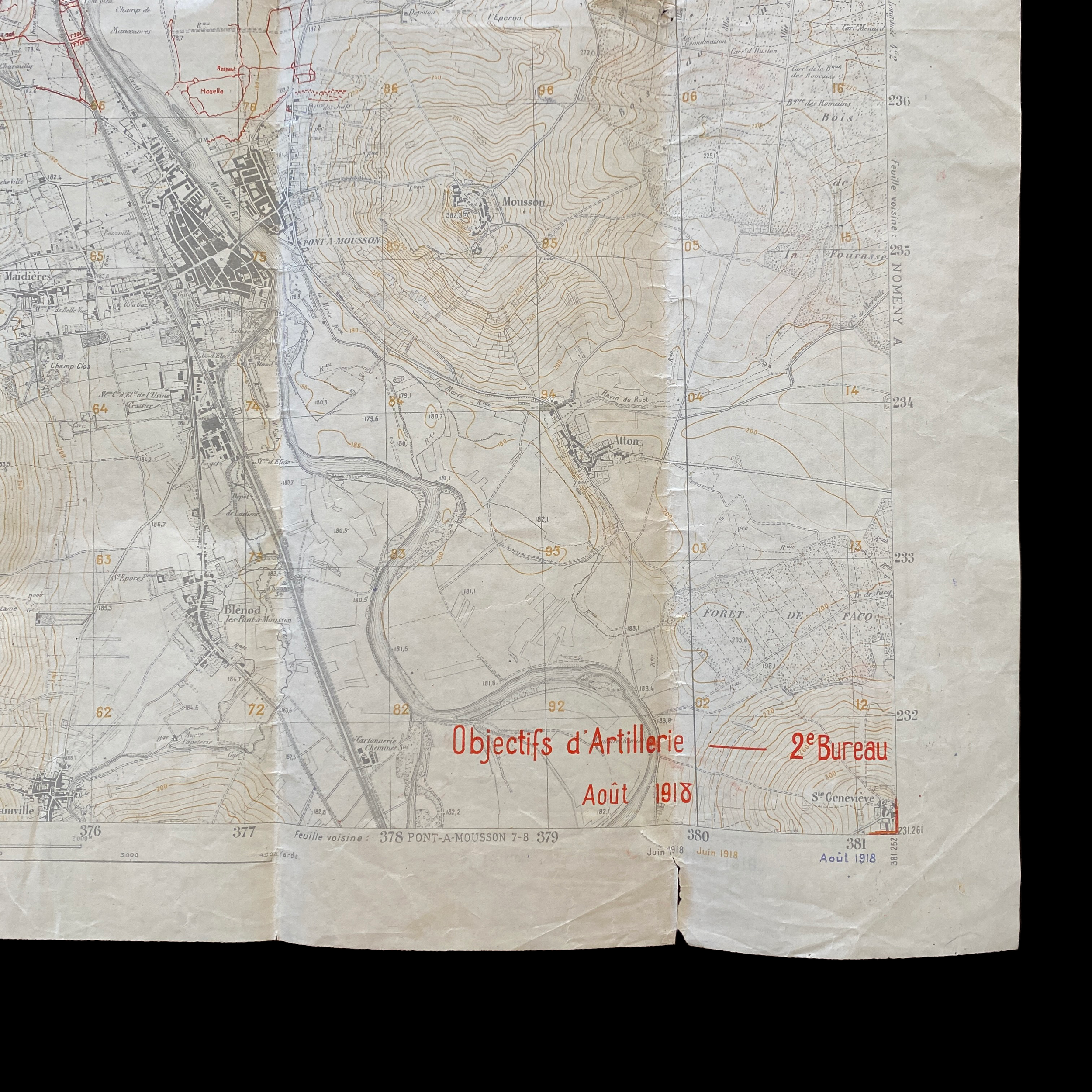
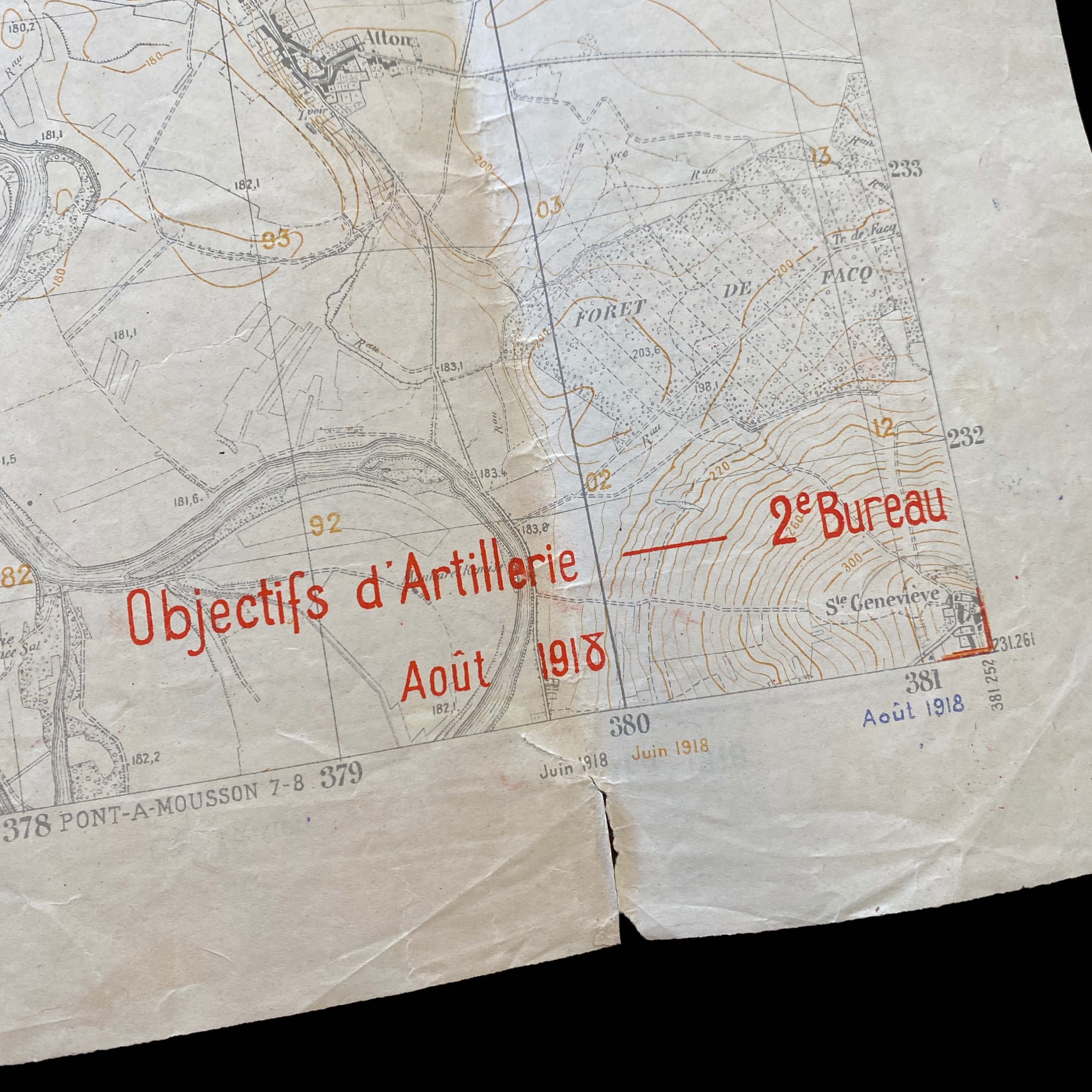
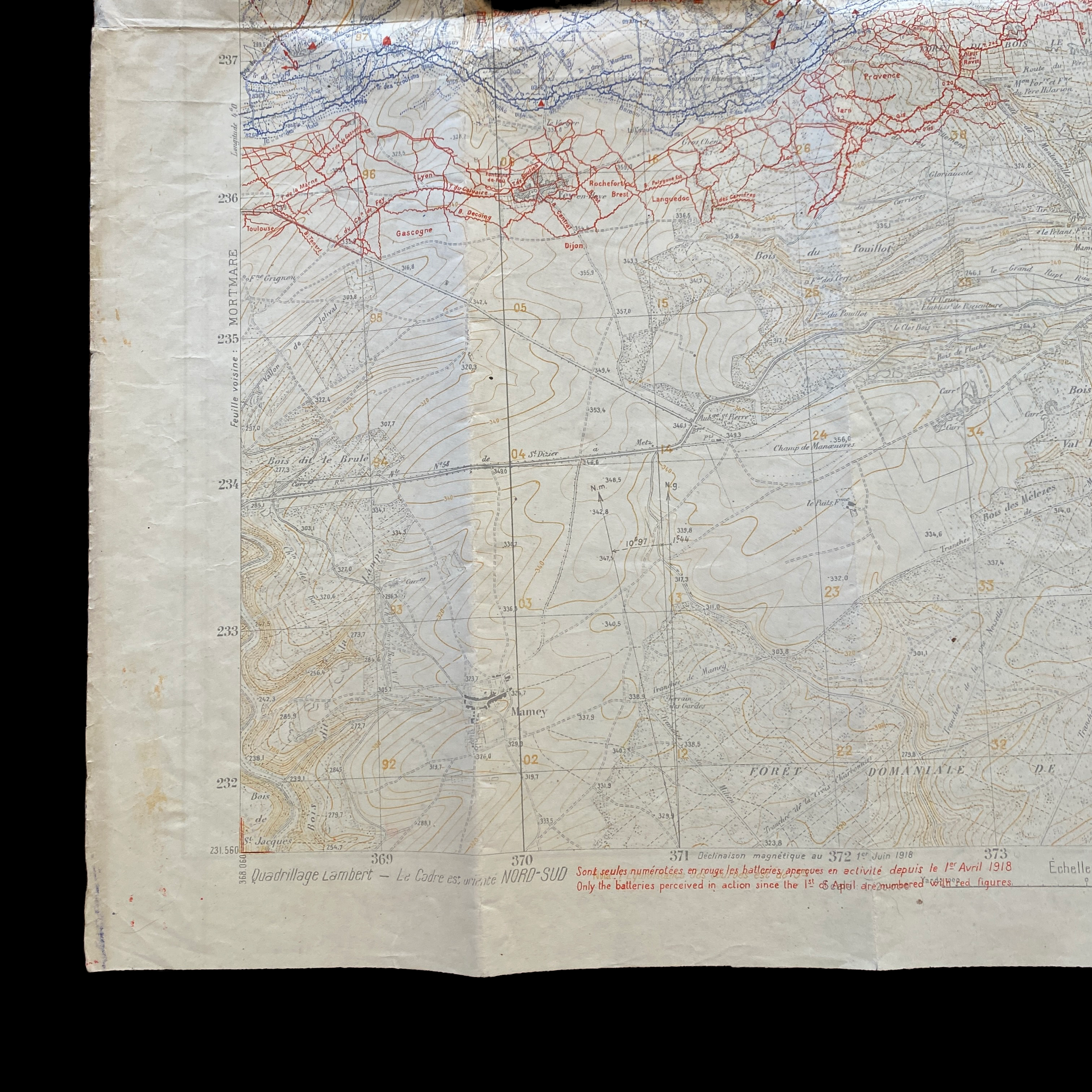


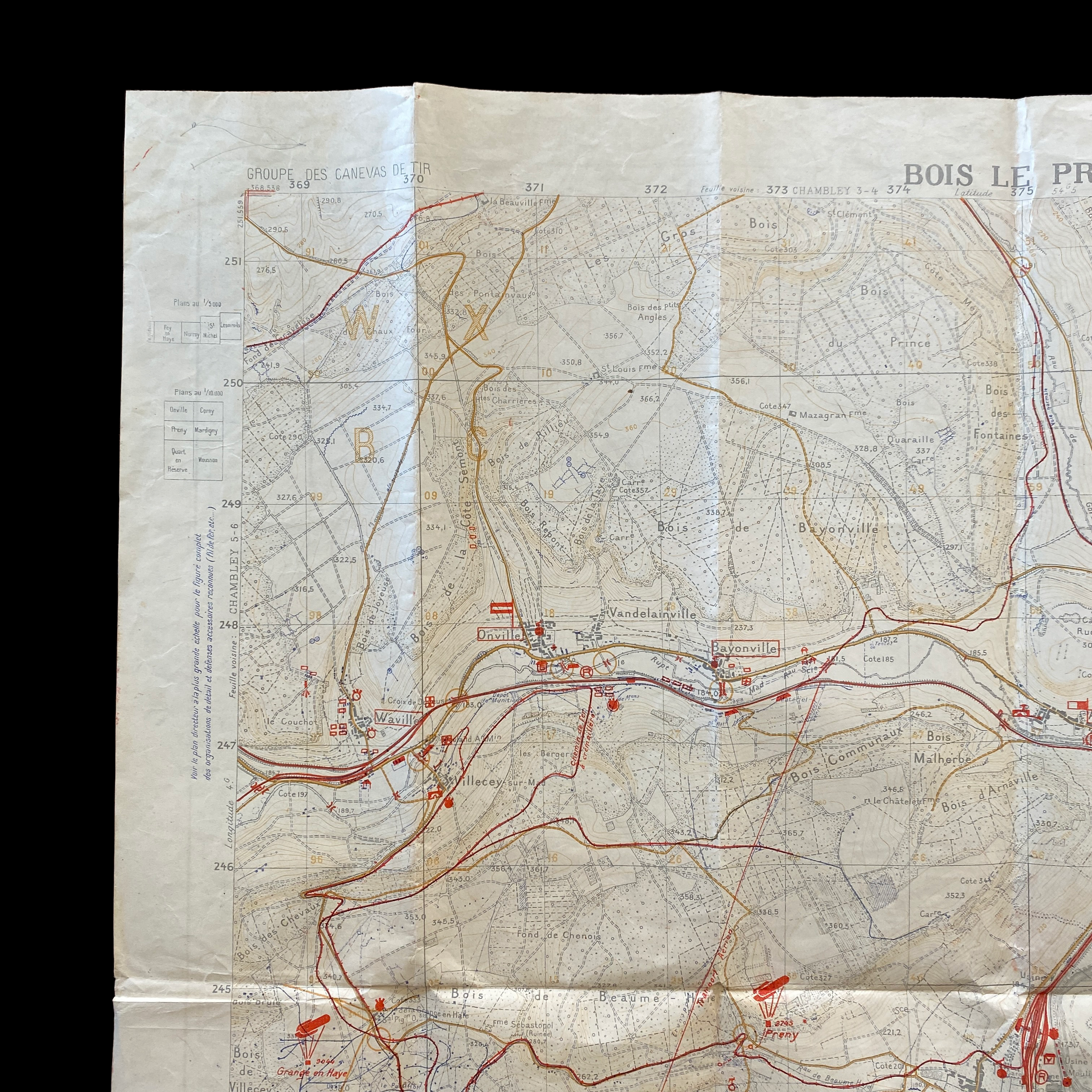
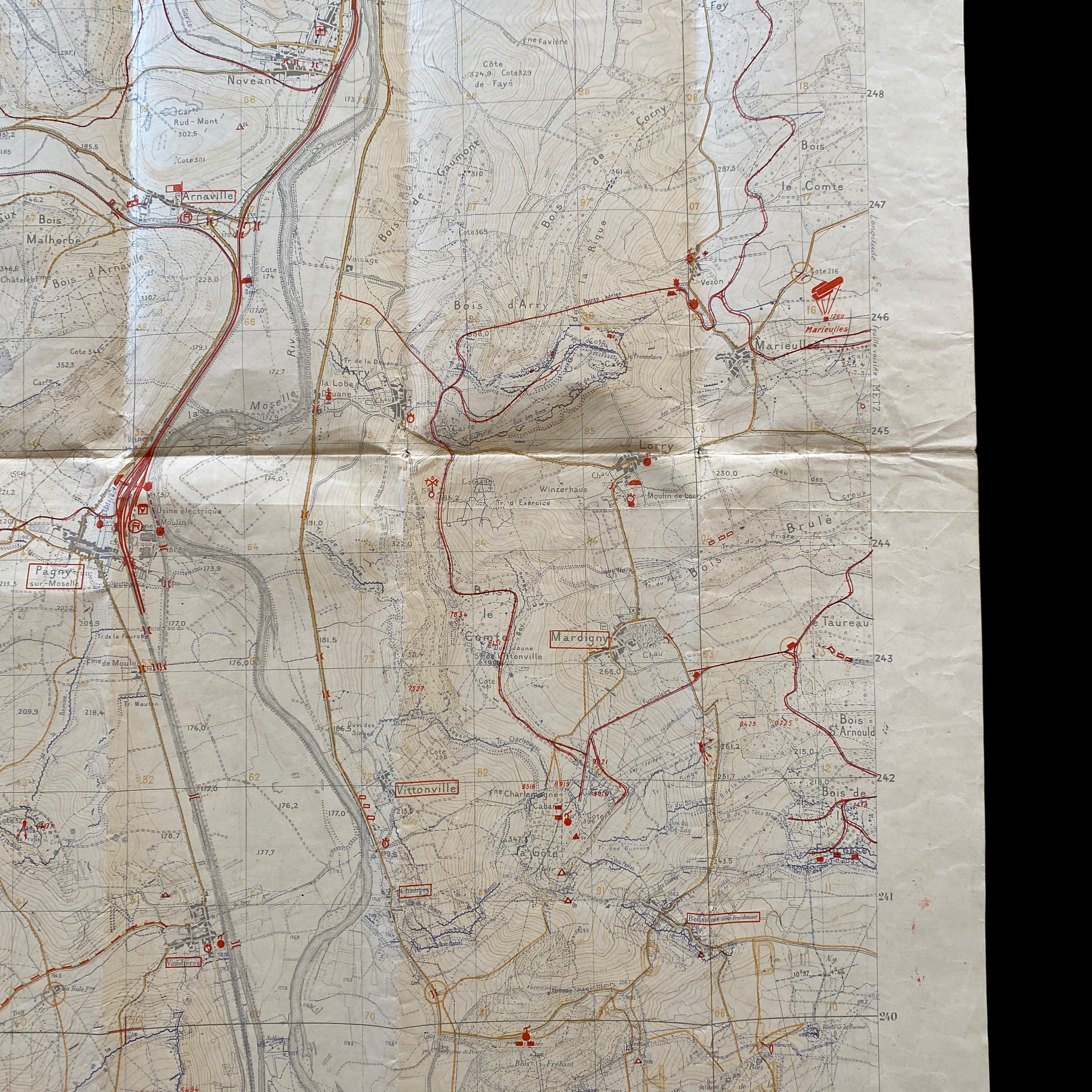
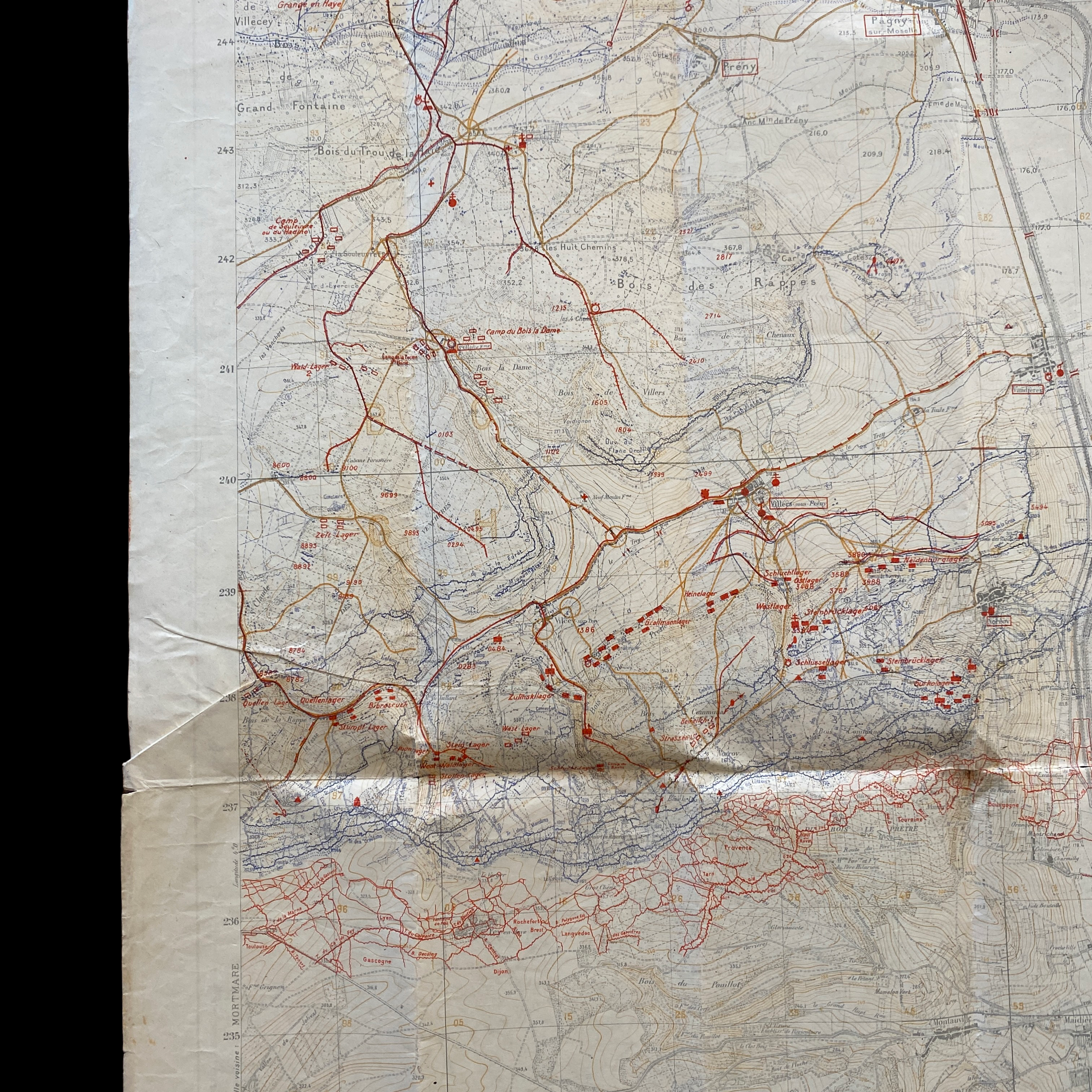































RARE! WWI 1918 Meuse–Argonne Offensive AEF First Army 90th Division Frontline Combat Artillery Trench Map (Double-Sided)
Comes with C.O.A.
This incredible and museum-grade World War I Meuse–Argonne offensive trench map is heavily marked with front-line trench, artillery objectives, and combat observations. This rare double-sided map was used by both American (AEF) and French soldier’s in the area of “LE SANON” and “BOIS LE PRETRE”. Dated 1918 this trench map was used by a 90th Division AEF artilleryman serving near NORROY in the “BOIS LE PRETRE” sector during 1918.
The Meuse–Argonne offensive (also known as the Meuse River–Argonne Forest offensive, the Battles of the Meuse–Argonne, and the Meuse–Argonne campaign) was a major part of the final Allied offensive of World War I that stretched along the entire Western Front. It was fought from September 26, 1918, until the Armistice of November 11, 1918, a total of 47 days. The Meuse–Argonne offensive was the largest in United States military history, involving 1.2 million American soldiers. It is also the deadliest battle in the history of the United States Army, resulting in over 350,000 casualties, including 28,000 German lives, 26,277 American lives and an unknown number of French lives. American losses were worsened by the inexperience of many of the troops, and the tactics used during the early phases of the operation.
History of the 90th Division Near NORROY and “BOIS LE PRETRE” during 1918:
On August 19 the 82d Division relieved the 2d Division in the Marbache Sector. On September 12, as the right division of the I Corps and of the First Army, the 82d Division conducted aggressive raiding and patrolling along its entire front with the mission of exerting pressure on the enemy's left flank, but made no permanent advance. The French 125th Division was to the right, and the American 90th Division to the left. The 328th Infantry, west of the Moselle River, advanced north of Norroy on September 13 to protect the right of the 90th Division. From this position, the regiment moved forward on September 15.
The attack of the First Army on the 12th had been highly successful. At the close of the day, it had reached the first objectives of the second day on most of its front. Reports from aviators and ground troops indicated that the enemy was withdrawing from the salient. The army commander, therefore, directed the IV and V Corps to push strong detachments forward to Vigneulles during the night of September 12-13. These detachments advanced across the front of the French II Colonial Corps, and effected a junction in the vicinity of Vigneulles early on the morning of September 13, thus closing the salient. [9]The 163d Infantry Brigade continued its patrol activities on September 13. At 6 p. m. two companies of the 327th Infantry raided Ferme de Bel-Air and the southern edge of Bois Fréhaut. [19, 20]West of the river, the right regiment of the 90th Division was engaged in mopping up Forêt du Bois le Prêtre and the quarries about Norroy. To cover the right flank of the 90th Division, which had become exposed during the morning, the 164th Infantry Brigade, at 1 p. m., ordered the 328th Infantry to advance its 2d Battalion to Tranchée de la Moselle and Tranchée de la Courberie. At 5:45 p. m. the 82d Division notified the 328th Infantry that the right of the 90th Division was then 350 meters northwest of Norroy, and ordered the regiment to establish contact with the 90th Division at that point. After dark, and under severe hostile fire from the east bank of the river, the 2d Battalion advanced through Norroy and gained the high ground beyond the town without meeting infantry. The right flank was refused for protection against possible attack from across the Moselle. The left flank was in contact with the 90th Division northwest of Norroy.